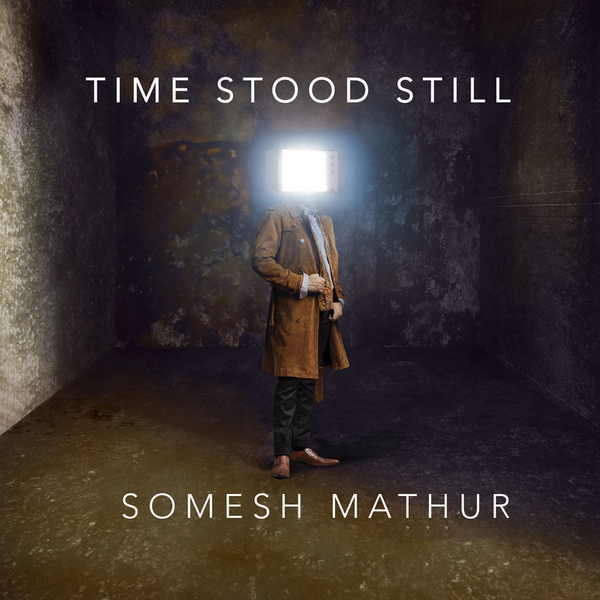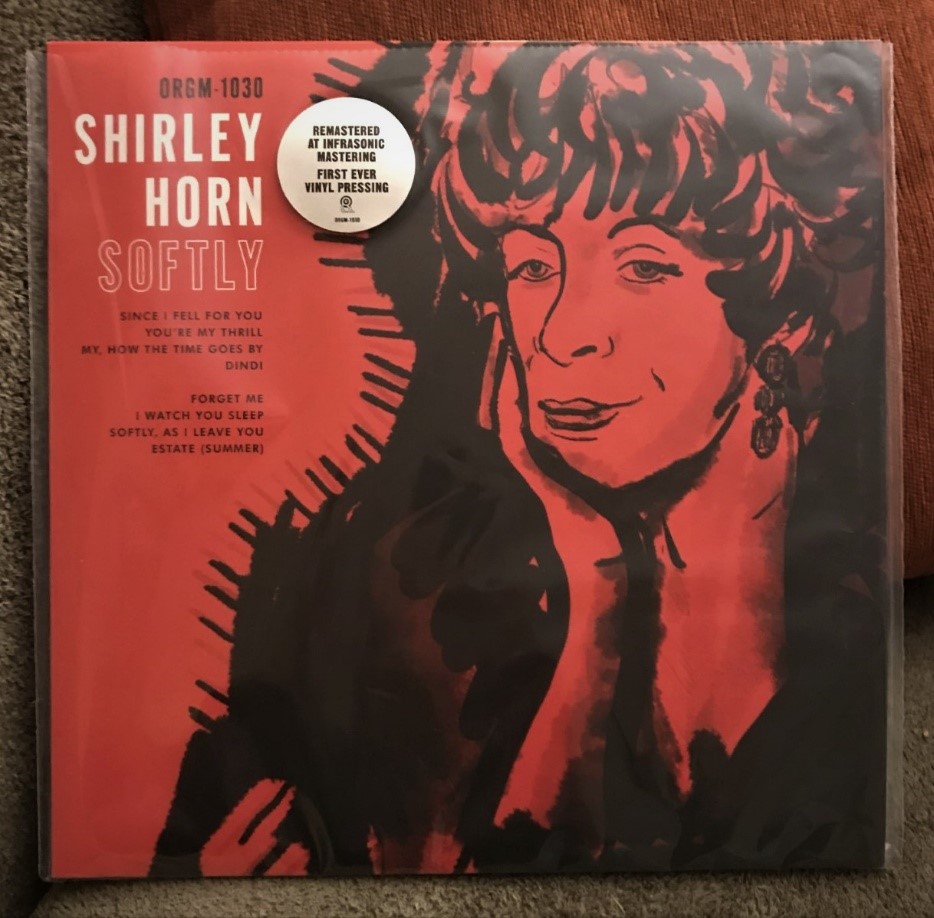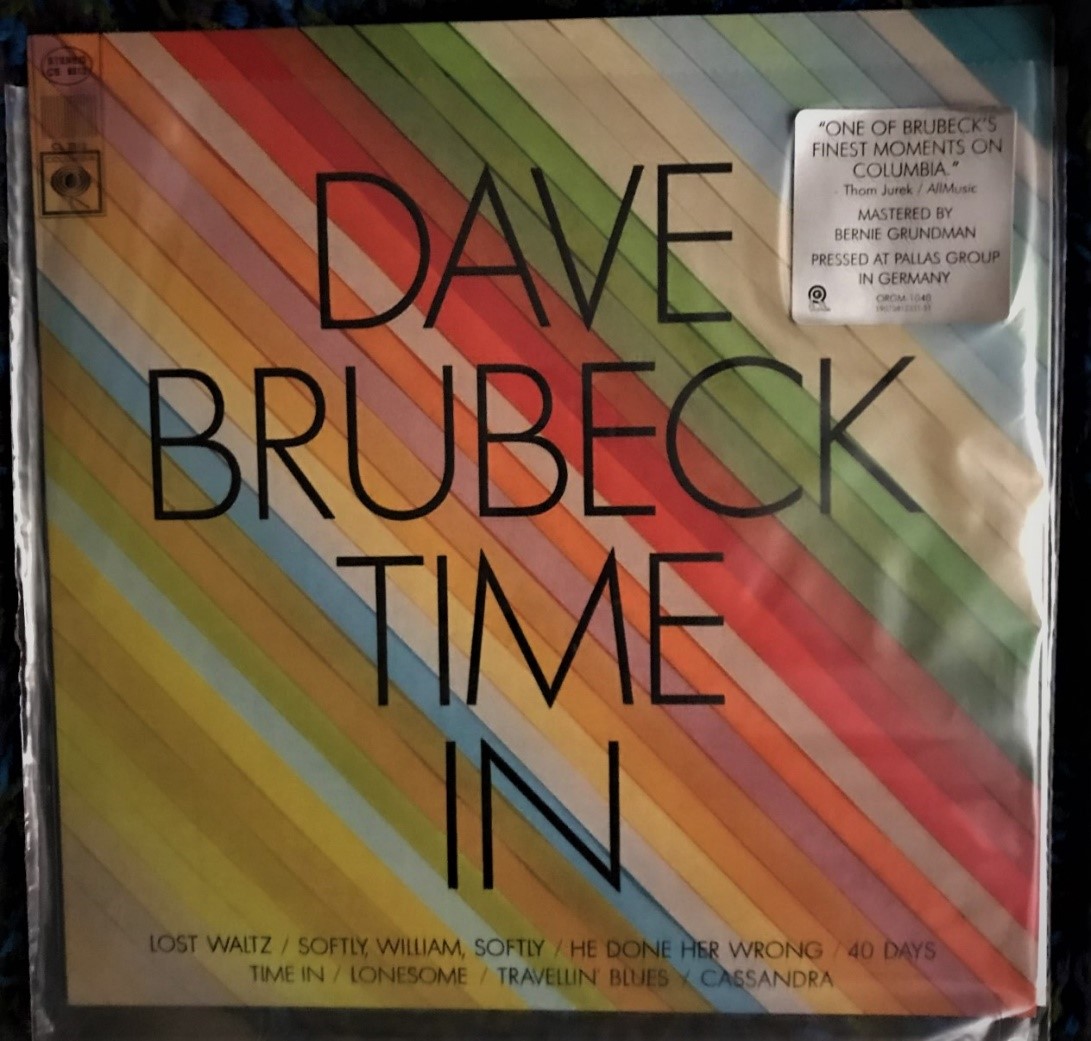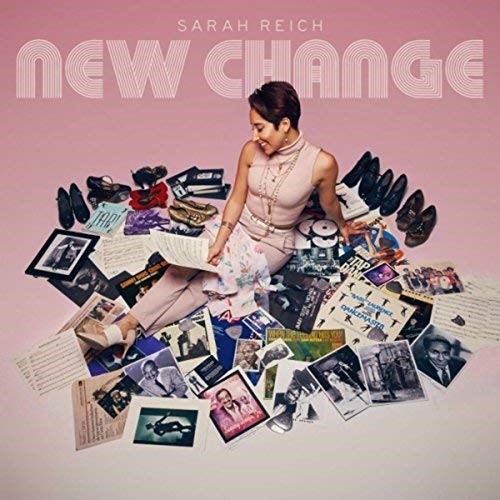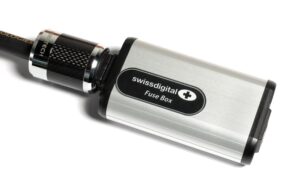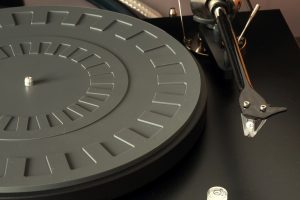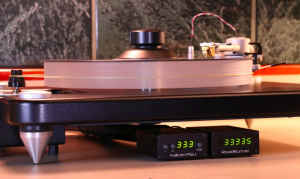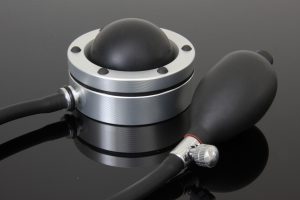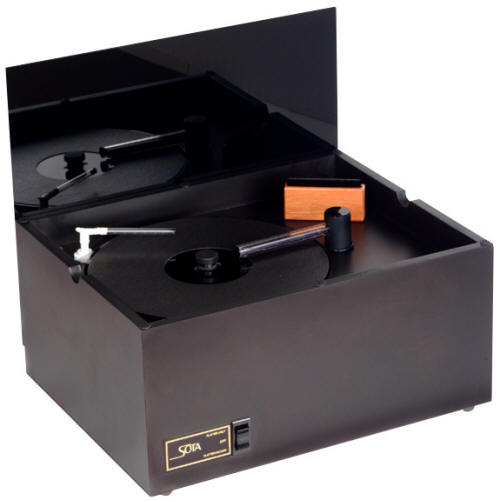
I've said it before and I'll say it again—you need a record cleaning machine if you're going to get serious about LPs. The tip of your stylus is not going to push the dust out of the way, as some famous people in our industry have claimed. Washing your LPs in the kitchen sink with lemon-fresh Joy and distilled water, just because you're trying to save a few bucks, is also for the birds. I've tried it, and it's only a solution for the OCD crowd. A well-designed record cleaning machine, in conjunction with high-quality brushes and an effective cleaning fluid—or fluids—is the very least you need to protect your LPs and enjoy quality analog sound for the rest of your life.
So which record cleaning machine should you buy? That's not so easy to answer. I've been loyal to one particular brand for more than 30 years, but that's not necessarily because I think they're the finest RCMs on the market…or even the finest machine for my tastes. But my first machine from this company lasted me almost 25 years—I gave it to someone who's still using it—and I was able to replace it with a newer, more automatic version just a few years ago. Long-term reliability is one of the most compelling arguments for brand loyalty.
Over those years, I tried quite a few machines from a variety of manufacturers—all the usual suspects, so to speak. One machine was made extremely well but I found I was getting fluid all over the record labels due to its flat felt platter, which was kind of a drag. I blame it on my own clumsiness, but again, that merely means it wasn't the right RCM for me. I tried some of the very expensive machines, the ones that are relatively silent and use a thread to clean deep down into the grooves of the record, but have you seen the prices on those things? Some of them cost more than a really, really good turntable. I once had the pleasure of using an old Keith Monks machine, and it was heaven, but in an O. Henry type of twist I would have needed to sell my entire analog rig to buy it. Even on the used market a Monks machine costs as much as a decent used car.
So I plodded along with a machine that was basically a safe, comfortable choice for me. I didn't like the way it kept overheating when I used a multi-step cleaning process like the Walker Audio Prelude record cleaning system, and I didn't like having to adjust the capstan with a screwdriver—not included, by the way—every time I cleaned records with varying thicknesses. I also didn't like the fact that the lead-in grooves of the LP were noisy during play because of the residue of the fluid that eluded the vacuum slot along the outside ridge. But it was affordable, reliable and familiar. While I dreamt of winning the lottery and buying that Keith Monks machine, I was resigned to the fact that I was probably going to spend the rest of my life with the machine I had—I was just going to focus on buying different brushes and fluids, the things that really matter when it comes to cleaning records.
The RCM Enters the Octagon
Then a funny thing happened—I met Kirk and Donna Bodinet from SOTA at the 2013 AXPONA show in Chicago, and we instantly hit it off. As exhibitors, we shared a room, and I got to show off our PureAudio Vinyl phono preamplifier with their flagship Millennia turntable—and I absolutely loved the sound. Over the next few months I interviewed them for my Vinyl Anachronist column for Perfect Sound Forever and I kept in touch with them periodically. They even approached Colleen and me to share a room at AXPONA again this year, but unfortunately we had other commitments. For me, the most disappointment about not going to AXPONA this year was not seeing the Bodinets.
They did offer to send me one of their ‘tables for review, but I import and distribute a turntable already, so there was a conflict of interest. To my surprise, however, I noticed that SOTA had a record cleaning machine—known simply as the RCM—and I thought, "I didn't know SOTA made a record cleaning machine!" So I asked them about it and they told me they'd send me one for evaluation. It took a while, which is a good thing—after a couple of decades of rebuilding this once legendary brand to its former glory, Kirk and Donna are very busy at SOTA, and they deserve to be. They're truly nice people, and they make everything in Illinois and Wisconsin.
When I opened up the box, I was instantly pleased at how the RCM was packed. It's packed, well, the same way a SOTA turntable probably is—plenty of cushioning in all the right spots, protecting the RCM like the valuable piece of equipment it is. In the past I've seen record cleaning machines packed like they were red-headed stepchildren, with a minimum of packaging that seems like it was "engineered" by heading down to the UPS Store and finding a box that fits.
Assembly of the RCM is quick and logical—I was cleaning records within a few minutes after unpacking.
The Most Brilliant $50 Exhaust Fan in the World
The SOTA RCM retails for $950, which places it between the basic entry level machines and those lofty machines that do it all and do it well—and in almost total silence. For $50 extra, Kirk and Donna install an optional exhaust fan in the side of the unit that keeps it from overheating. For this reason alone, the RCM is worth the price. As I said, I've been using the Walker Audio Prelude system over the last few years. It's a four-step process—first you mix the enzyme powder into the ultra-pure laboratory-grade water (which is $64 per half-gallon!) and then you shake it up and apply it to the record. Then you vacuum the record. Then you add the record cleaning fluid to the record. Then you vacuum the record. Then you rinse the record in more of the ultra-pure water. Then you vacuum the record. Then you repeat step #3 just to make sure you've removed all of the gunk and the residue from steps #1 and #2. Then you vacuum the record one last time. (Since I bought the Prelude fluids and brushes, they've even added a fifth step known as "Final Rinse.")
After cleaning two or three records, my old machine would overheat and need to cool off for at least twenty minutes before I could resume. That was problematic since the enzyme powder, once mixed with ultra-pure water, has a lifespan of only a few hours. (Unmixed, it only lasts a couple of years but at least it's only $18 to get more.) I was constantly having to battle between using all the fluid in a timely manner and not blowing up my record cleaning machine. All of these problems are eliminated with the SOTA RCM—the exhaust fan, which is almost perfectly silent, kept the machine absolutely cool even during marathon cleaning sessions.
In other words, don't think twice about paying the extra $50. Get the fan.
Brushes, Fluids and Other Neuroses
I've always said that while it's important to buy a record cleaning machine to preserve your record collection, you probably shouldn't start asking everyone on those Internet audio forums about which ones deliver the best results. I can remember back in the ‘90s when Corey Greenberg, then of Stereophile, compared two of the most popular RCMs and concluded that the final results were exactly the same—it's the fluids and brushes you use with that machine that will make the real difference.
So if you're choosing one RCM over the other, it's usually a decision based on convenience and features, not ultimate cleaning quality. I'm not saying that a brand new Keith Monks machine (they're still making them, by the way) can't clean better than that weird plastic trough with the manual crank that everyone's buying these days. But I firmly believe that you should buy the machine that fits into your cleaning regimen, the one that feels right to you and meets your budget, the one that doesn't irritate you all of the time with its idiosyncrasies. That's why I haven't been naming names in this review—buying a record cleaning machine is as personal of a buying decision as it is with any hi-fi component, and your priorities are probably not the same as mine.
When you buy the SOTA RCM, however, it comes complete with a bottle of fluid and a beautiful little brush with a hardwood handle. I really enjoy how the bottle of fluid fits into a concealed compartment in the base of the RCM and the pump lines up perfectly over the grooves of the LP. The SOTA fluid is, on first sniff, obviously alcohol-based, but at the same time the instructions caution you to always use a cleaning solution that contains less than 25% alcohol. It applies to the record surface evenly and is vacuumed up quickly, and it removes all of fingerprints and dust with a minimum of scrubbing.
The brush, as lovely as it is to hold and use, has bristles that may be firmer than you're used to. It's clearly not going to scratch my records, but I did find myself scrubbing with less vigor than I would reserve for the softer Walker Audio brushes or my ergonomic favorite, the rubber-handled brushes from the Disc Doctor. But after a few cleaning sessions I started to appreciate the feel of it in my hand, and I kept using it.
But it all comes down to this—of course I'm going to suggest that you use the fluids and brushes you prefer, and most audiophiles have a strong preference one way or another. But I really started to like using the SOTA fluid and brushes. They're simple and effective and they make the entire process effortless—it's all part of a seamless and optimal whole. I still ultimately prefer to use the Walker Audio Prelude system—or any fluid system that uses live enzymes to break up contaminants on record surfaces—but I still like the convenience of having a single bottle of all-purpose record cleaning fluid for the times I don't want to spend six or seven minutes cleaning a single record. I'll save the Walker system for those times when I break down and grab some dusty old LPs from an antique store or thrift shop…or eBay, of course, which has been the bane of my existence when it comes to filling in holes in my LP collection.
Instructions? I Don't Need No Stinkin' Instructions!
Overall, the procedure for cleaning records with the SOTA RCM is fairly straightforward—but there is a slight learning curve involved. The instructions are thorough, of course, but I did rush in and try to use the RCM without reading them—with predictably mixed results. So I offer the following specialized tips for RCM users, based upon those first sloppy hours in my listening room:
There's a screw-down puck that clamps the record down on the RCM's platter. Screw that sucker down tight. If you don't, several things will probably happen. First, the record will sit too high and the vacuum wand won't have enough clearance and the record will stop spinning. Second, the excess fluid will find a way to get underneath the record and onto the platter, which means you'll keep re-wetting the side of the record that's facing down. You'll have to dry the platter off before you can start again. Occasionally the puck comes loose while the record is spinning, but again that's because it's not screwed on tight enough in the first place.
Since the vacuum arm rests so closely to the record surface, 180g and 200g records will probably get stuck and stop spinning unless you make the proper adjustments to the vacuum wand. You'll need to rotate it slightly to and fro, taking care not to touch the cleaning surface, to adjust the space between the record and the wand. You can also adjust the o-ring on the base of the wand for more stability. If there's too much space the fluid won't get vacuumed off, so you'll need to practice a bit before you can find a setting that works for the majority of your records—sort of like finding a universal VTA setting with your tonearm, something that all of us sane vinyl lovers do.
It takes slightly longer to vacuum all the fluid off the record than with some of the other machines I've used. With my old machine, three complete revolutions pretty much dried every LP until the cleaning pads became totally soaked with fluid. With the SOTA, you may need to step away for 15 to 20 seconds or more before your record is absolutely dry.
There's a delicate balance between using too much fluid and not using enough fluid with this machine. Using too much fluid results usually results in a mess—it takes forever to get the excess off the platter and the wand and everywhere else. Use too little fluid and the SOTA brush fights to cover the surface of the record evenly and consistently. Again, you'll have to practice to get the amount right, but I've found that two firm pumps from the fluid bottle usually suffices—especially when the brush is already wet from prior cleanings.
Okay, I was kind of hoping that the RCM wouldn't sound like a vacuum cleaner when it's turned on, but a silent record cleaning machine is generally a costly one. That's why you should use earplugs when cleaning records with vacuum motors, or just step away while the LP is being cleaned. Or do both.
Diary of a Mad Record Cleaner
Those minor quibbles out of the way, I'm now going to summarize why I love the RCM and prefer it to most of the other machines I've used:
The exhaust fan. That glorious, glorious thing. I love it. Enough said.
One-sided cleaning. On my old machine, I had to apply fluid, flip the record over and then vacuum. Whilst flipping over the record, fluid usually flies everywhere—especially on the record label. That alone is the reason why an overhead vacuum wand will always be superior to a vacuum slot that faces upward.
The platter. I like how the platter of the RCM is indented in all the right places, which means that my days of accidentally moistening the record label are over.
The vacuum wand. I also like how the vacuum slot on the wand is exactly the right size—it stretches from the edge of the record label to the edge of the LP. So my days of seeing those few remaining drops of fluid on the dead wax and the lead-in groove are also over.
The acrylic dust cover. It's perfectly flat and doesn't have sides, so it's easy to stash out of the way while you're cleaning. I used to trip over my old one all the time—it was shaped just like the bulky dust covers you get with many turntables.
The build quality.The RCM is beefy and sturdy and heavy. It's made well. It weighs 30 lbs. That means it will probably last a very long time—like other RCMs. But there's something about its solid yet simple design that will appeal to those who appreciate elegance more than the latest technologies—you know, like the majority of vinyl lovers. If a Keith Monks machine is a Ferrari, then the SOTA is a BMW 3-Series.
The most important reason why I love the RCM and plan to keep it is that once you've gotten the hang of it, it's amazing easy to clean records quickly and perfectly every time. I've always imagined that the ultimate RCM would be the one where you slide the LP into a magic slot, push a button, and ten seconds later a perfectly clean LP pops out. Some of the hyper-expensive RCMs out there come close to this, but they cost more than my current turntable—with cartridge and arm.
I'll buy that Keith Monks machine the day after I buy my Shindo Garrard 301 or my custom-made Steve Dobbins rig—in other words, probably never, except in my dreams. For an extremely reasonable amount of money, however, you can buy the RCM, clean records quickly and easily, and protect your record collection for the rest of your life. Marc Phillips
RCM
Retail: $950
SOTA
www.sotaturntables.com/lpc.htm
Marc Phillips is a partner with Colleen Cardas at Colleen Cardas Imports




